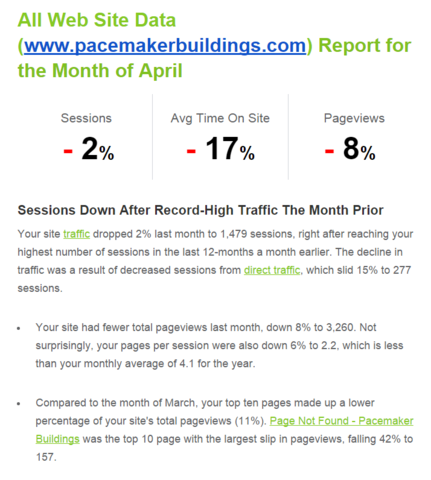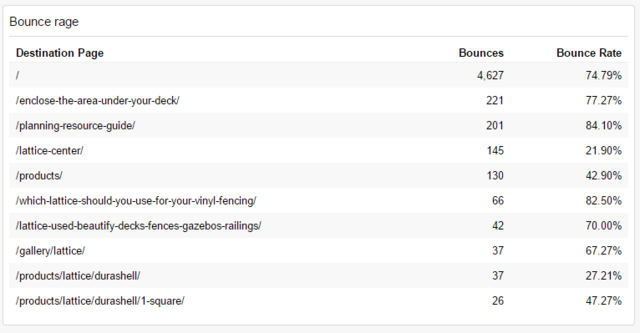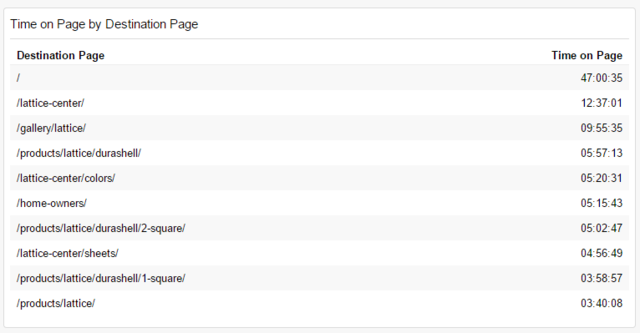Metrics to Measure the Success of Your Website Marketing
The only way you can make progress with your online business is to keep track and measure your activities. For most small business owners, measuring sales is at the top of the monthly and quarterly agendas.
However, sales are a result of the marketing strategies and processes implemented in the business, so it makes sense to measure these marketing activities. Metrics provide insight into the health of your online business marketing tactics.
You want to do more of what is working and adjust items to help achieve optimum value. However, not all metrics matter!
For instance, would you rather measure the number of mentions your brand gets on social media or the number of new leads that result from the mentions? Clearly, measuring the latter is important since it impacts your sales.
Here are a number of metrics that can help your business measure and gauge the effectiveness of your online marketing:
1. Total Visits (Sessions)
The total visitors (sessions) to your website will help you get the “big picture” of how well your marketing campaigns are driving traffic.
While you may be driving traffic to your website, you should also measure the number of visits to your social media accounts and landing pages as well.
If your online marketing is working, your web traffic will be growing. There may be small dips at times based on seasonal fluctuations or other items but you want your traffic to be ever growing as you reach more of your ideal audience online.
If you notice a drop in the number of visits in consecutive months, investigate those channels and optimize them for better performance. A healthy business should see the number of visitors growing steadily over time.
2. Channel-Specific Visitors
If you’re using different avenues to drive traffic to your website, find out how many visitors come from each of those sites.
For instance, if you are using a Facebook Page and perhaps Facebook Ads to drive traffic to your website, then you want to review at least monthly the traffic coming from Facebook to your website.
Google Analytics (free web analytics tool you can add to your website) makes this easy to see. Measuring channel-specific visitors is especially important if you want to segment the traffic based on their point of origin.
This metric can help you identify the properties that bring the highest number of referrals so that you can concentrate your efforts in future marketing.
So, if you are using Facebook and measuring traffic from it, then if you notice Facebook is driving more visitors to your website in subsequent months, scale your promotions in the channel.
For instance, post more often, use PPC ads, experiment with Promoted Posts, etc.
3. Bounce Rate
The bounce rate refers to the percentage of visitors that leave your website quickly without reading your content. If they land on a page and quickly leave, they have “bounced.”
You want to try and keep the bounce rate as low as possible by creating high-quality content that will make visitors want to spend more time on the website.
So, if you see the bounce rate increasing per month, that’s an indication to put more emphasis and changes into your site content. One item important to this is a mobile-friendly website!
You may have quality content on your site but if the site is being visited by mobile users and the site is not mobile-friendly (easy to use and view on mobile) then that can be the reason for your bounce and it needs addressed!
To research this, Google Analytics lets you see the percentage of users to your site that are on mobile devices. If you have a high bounce rate and a mobile visitor percentage above 40%, that can be a key item you need to address!
4. Time on Site
Related to the bounce rate is the time spent by visitors on your site. Ideally, you’d love to have visitors spent 5-8 minutes on your site per visit. That means they are digging in, reading your website content and going to multiple pages.
By watching this metric, a business can tell what content is working and how well you are providing useful value to your visitors. The more they spend time, the more trust can be built, and the more they can be comfortable making a purchase from you!
5. New Leads
Definitely track the number of leads that your online properties are generating. Leads are the lifeline of any small business. Here is an overview of the leads you can track:
- Overall leads generated from your website and other online properties via forms that they submit on the sites
- Number of new leads that converted to customers
- Number of leads that inquired about your product or services
This may mean the people that answer your phones need to be trained to inquire how the caller first got acquainted with you. If it was via your website, document that in a spreadsheet so you know how your online is translating to your offline.
When leads enter your sales funnel, it’s important to then segment them based on their interests. This way, you can engage them with relevant content, likely via email marketing, to build their trust and break the ice.
Consistent lead engagement helps to reduce the friction to buying. Measuring these five metrics above are simple methods that will help you understand the effectiveness of your online marketing strategies!
Want a simple way to get a report each month helping you to measure these items? Check out Quill Engage and how it generates a report from your Google Analytics.





